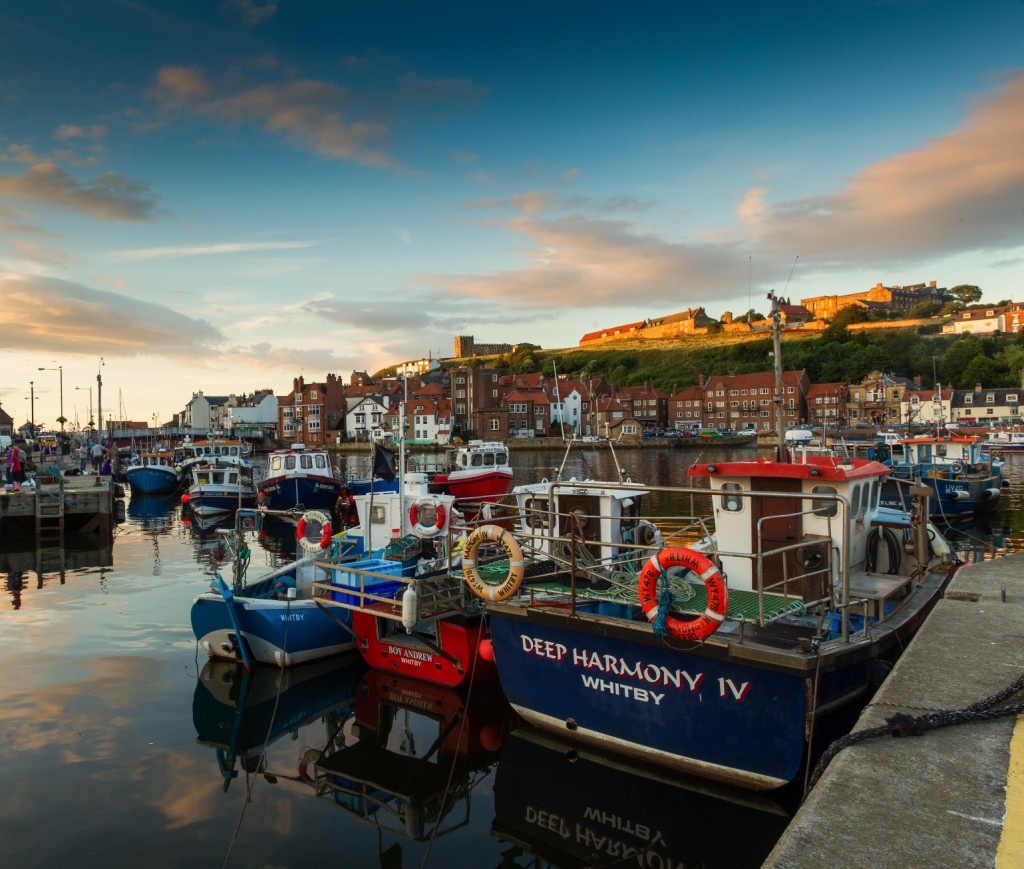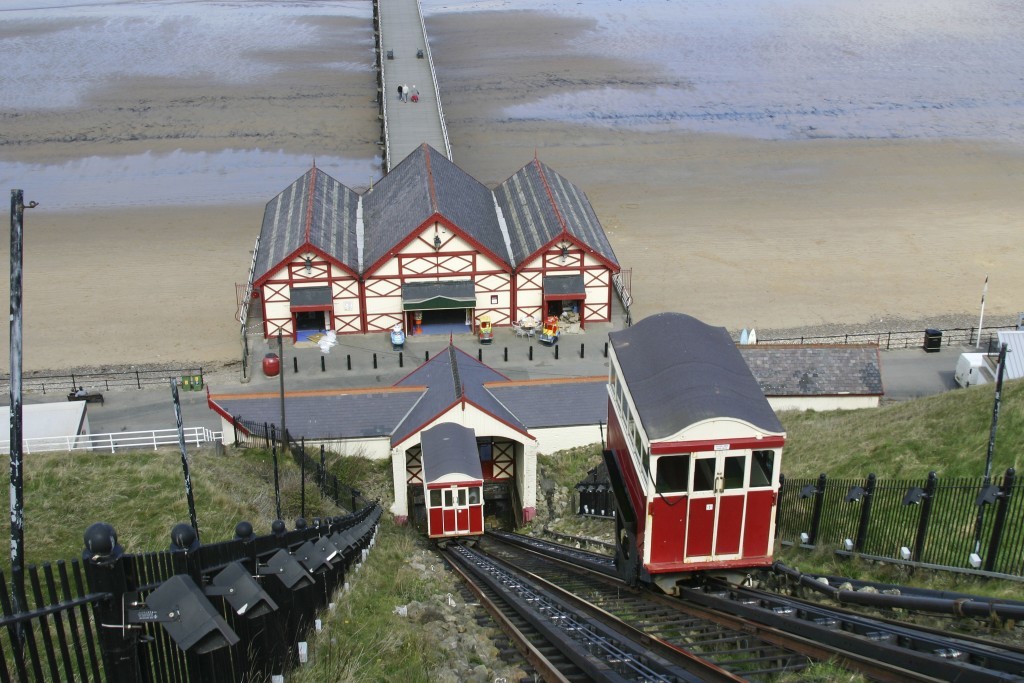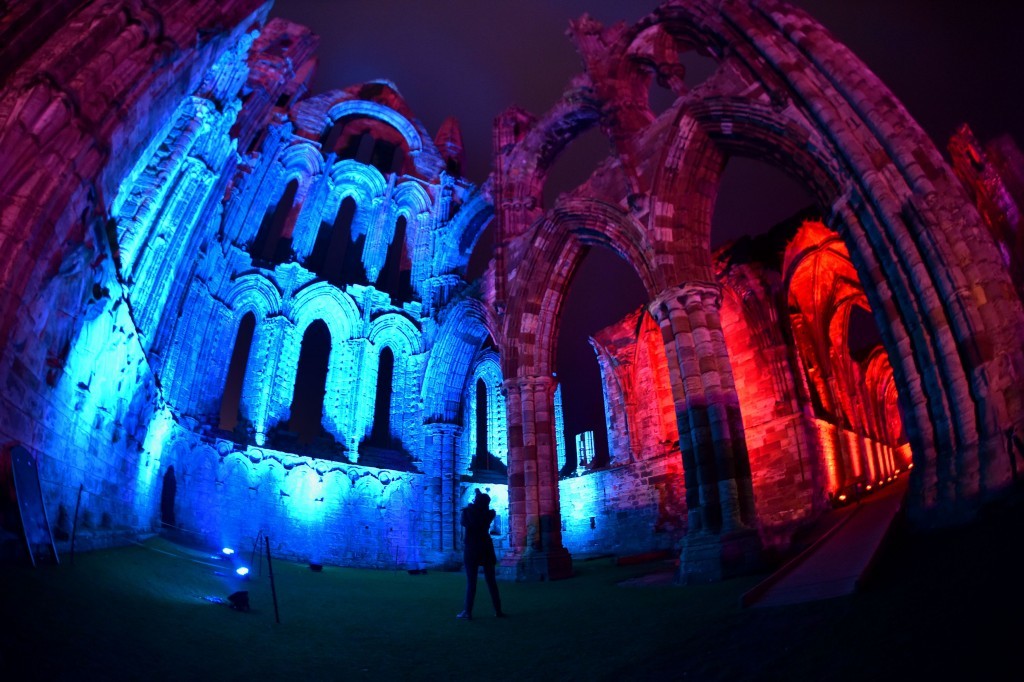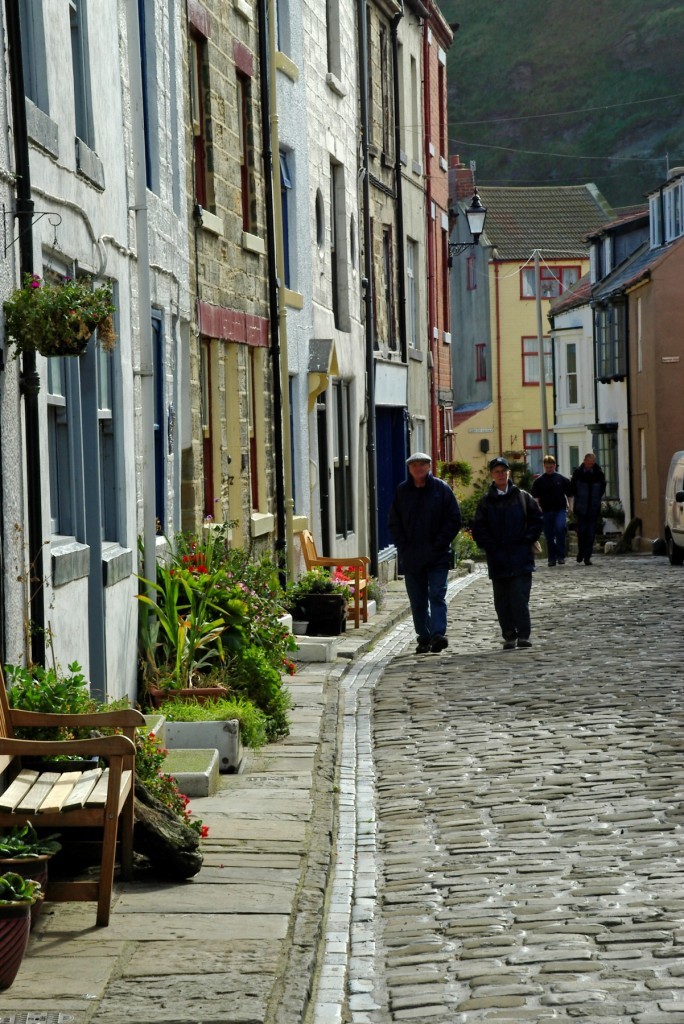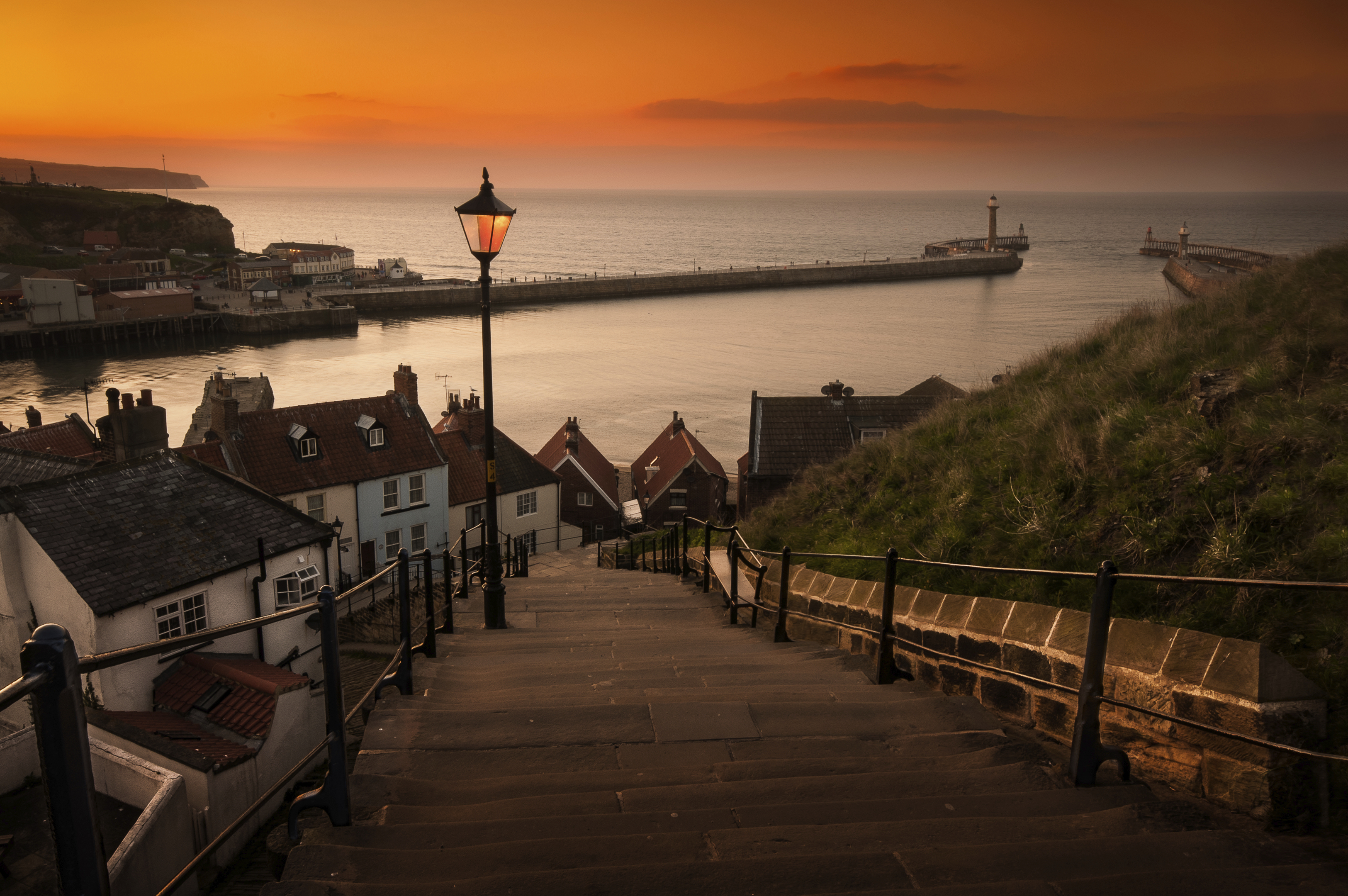
So it’s full of highlights for those heading to the sea for a break. And, as we discovered, it’s full of high points too. Literally. Hills.
They were to become a common theme and a challenge for lungs and legs alike.
First up was Whitby. We started by heading along narrow, cobbled Church Street, just across the much-photographed swing bridge over the river.
It took us past one of Europe’s oldest pubs, the Black Horse and W Hamond, the original Whitby Jet shop, which has been displaying its wares since 1860.
At the end we found the wide, well-worn steps leading up to the imposing Abbey on the headland.
They’re known as the 199 Steps – and yes, we counted every one. But both the Abbey itself and the stunning views are well worth it.
Take a tip though – if you don’t fancy the walk, there’s a car park at the top right by the visitor centre.
You can’t miss the ruins from wherever you are in or around Whitby and they’re just as impressive up close.
The Benedictine Abbey has been here since the 11th Century and the spiralling stonework you wander around dates from the 13th.
The views to the harbour are stunning and back down in the town you’ll find some of the tastiest fish and chip shops in Yorkshire.
The reputation of the Magpie Café, in its original 18th Century merchant’s house building, has obviously spread.
It’s a real Yorkshire institution and there’s a pre-lunch queue right into the street.
And if you want to see the harbour from the water we were impressed that a boat trip can still be had for a bargain £2.50.
Just a few minutes along the coast is Robin Hood’s Bay.
We parked at the top and took the narrow cobbled stone streets and steep steps down. It really is quaintly unchanged, with shops, pubs and holiday lets.
Although the bay is peaceful now, a notice on a holiday cottage reveals it was once the police station, built to house miscreant navvy railway workers.
When the hardened Victorian labourers got paid on Saturday afternoons, such drunken mayhem followed they had to be carted off in net-covered carts to Whitby.
Hence the need for a local jail.
Right down at the slipway is The Bay Horse, the end point of the 192-mile Coast to Coast route.
It was devised by legendary countryman Alfred Wainwright and the bar where you can toast the completion of your mammoth trek is named in his honour. We could well imagine how welcome a finishing drink must be as the steep incline down – and even more so the prospect of the trek back up – had us puffed out.
The past is very much in evidence even further along the coast at Saltburn-by-the-Sea.
Originally the holiday haunt of 19th Century workers, the centrepiece – its pier – still stands proud as do the buildings housing the grand cliff top hotels constructed to cater for them.
Having had enough of huffing and puffing up inclines we took the still- operating funicular railway.
It’s the oldest operating water-balance cliff lift in the UK and we take the short scoot up in one of the distinctive red and white cars.
At the top it was fascinating to watch the brakeman use the original old machinery, bringing the cars to a safe and slow stop.
It’s also the best spot to admire the pier, which opened in May 1869 and has been so lovingly restored it’s a recent winner of a pier of the year award.
You can get a flavour of what working life must have been like for the day- trippers 10 minutes away at Skinningrove.
The Cleveland Ironstone Mining Museum is on the site of one of the original mine workings and it’s a real eye-opener.
Everything from the young age at which mining life started, to the fact that women left widowed had just one short month to bury their husband and find and wed a new one or face life in the workhouse.
And you get a chance to actually go underground to get a sense of the dark and dangerous existence miners endured.
Even on a warm, sunny day there’s a biting chill and eerie stillness that makes us happy to see daylight again.
READ MORE

Enjoy the convenience of having The Sunday Post delivered as a digital ePaper straight to your smartphone, tablet or computer.
Subscribe for only £5.49 a month and enjoy all the benefits of the printed paper as a digital replica.
Subscribe